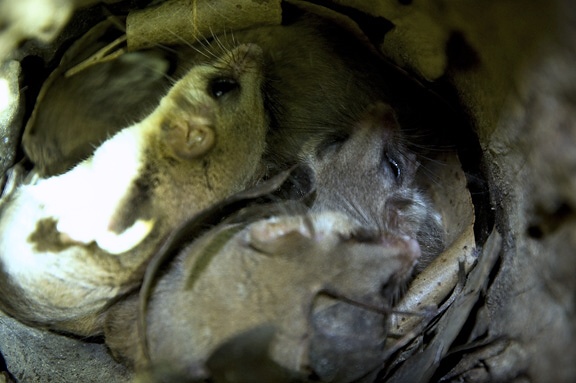Preserving Endangered Flora and Fauna
Forests NSW employ a team of skilled ecologists and support staff who have undertaken an estimated 20,000 surveys in the NSW Central Region over the last 15 years. The Central Region extends from Macksville to Tamworth in the North to Putty and the Hawkesbury River in the South of NSW.

As a result of this work, Forests NSW have an ever increasing amount of knowledge about the land-scape and the processes necessary to ensure endangered flora and fauna are preserved into the future. “Our next step is to to introduce a landscape biodiversity monitoring program that assesses the health of the ecosystems across the broad land base. This will help to determine the effectiveness of the actions undertaken to protect the species” said senior ecologist Chris Slade.
"Apart from pre-logging surveys we are also involved in targeted research projects, such as for the Eastern Pygmy Possum and species-specific monitoring programs such as for the Brush-tailed Rock Wallaby and the Large-footed Myotis (Insectivorous Bat). The Myotis monitoring has highlighted very healthy populations at both monitoring sites in the Wilson River and Upsalls Creek catchments. These include a variety of regenerated forested areas and other surrounding land uses. This is an amazing species of bat which flies closely above the surface of the water along creeks trawling for aquatic insects. Interestingly we recently re-captured an individual that was first caught in 2005 in a tributary to the Wilson River during monitoring surveys. The individual was captured during pre-logging surveys and again during the 2012 Wilson River monitoring survey. The distance between roost sites is 7.8kms as the bat flies along the creeks.  This has revealed a lot about the longevity of the species in the wild, will assist to give an indication of population size and has highlighted the habitat use and value of riparian habitat management employed" said Chris.
This has revealed a lot about the longevity of the species in the wild, will assist to give an indication of population size and has highlighted the habitat use and value of riparian habitat management employed" said Chris.
Considerable attention is being given to biodiversity in general with the aim of introducing the monitoring program. “Persistence in the landscape is key, particularly corridors, flora reserves, linked river filter strips and fire protection zones are areas we give a lot of attention to ” said Chris.
Chris’ team, which he affectionately refers to as the ecology group is multi-disciplined and works closely with other teams from Forests NSW including surveyors, harvest planners.
If you would like more information regarding this article please submit a request here.




